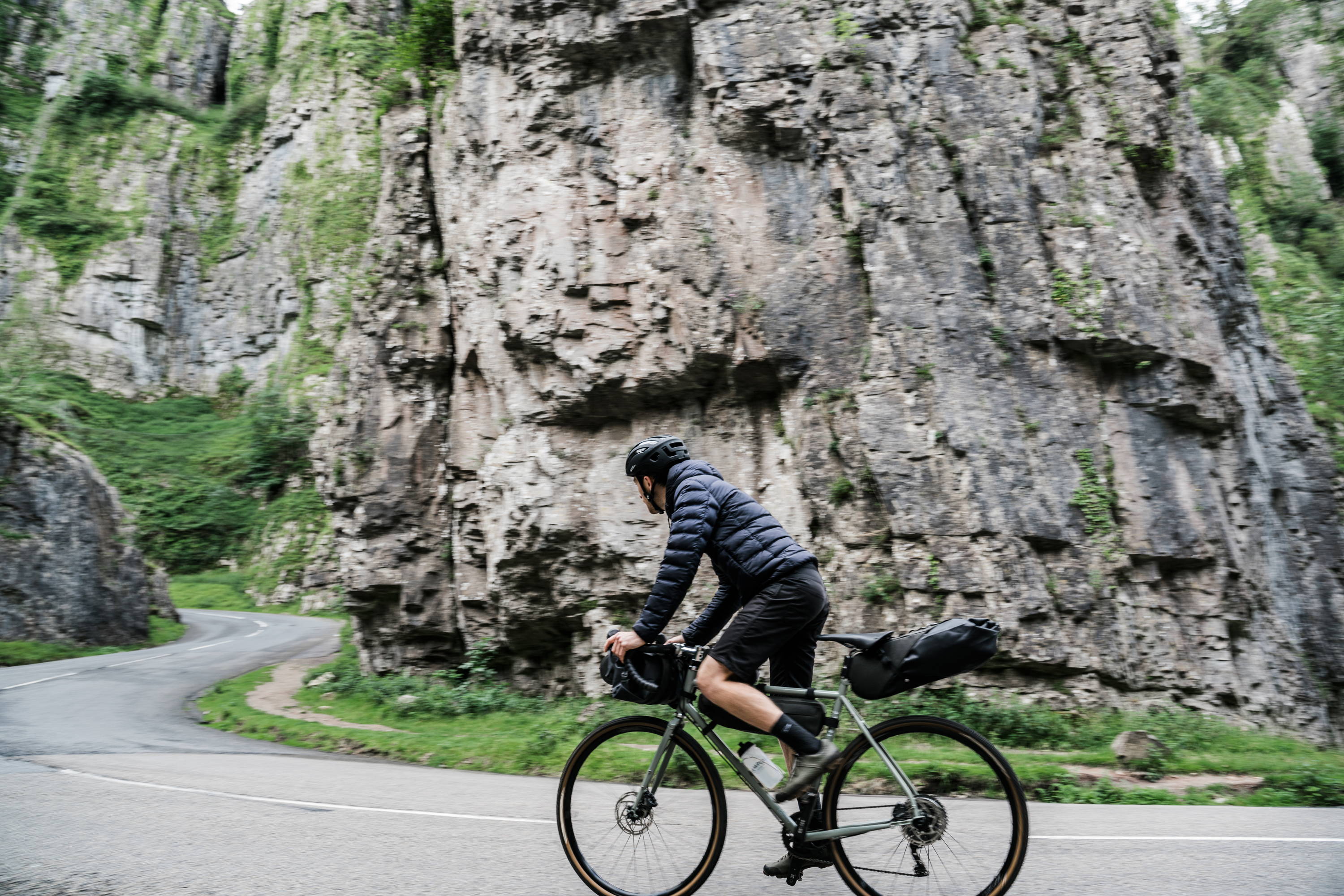BIKEPACKING vs BIKE TOURING
Are you looking to go on a multi-day bike adventure? Are you wanting to learn more about the differences between bikepacking and bike touring? Our workshop manager James is well seasoned at both and has written this piece to help you out #jointheride.
Words: James Stockhaussen
James with a bikepacking setup - Image from Jim Holland
Jess with a bike touring setup - Image from Jim Holland
WHAT IS BIKEPACKING?
The idea here is to distribute the weight of all of your gear around the bike, to keep the handling as similar as possible to an unloaded bike.
WHAT IS TRADITIONAL BIKE TOURING?
Heidi with her traditional bike touring setup: x2 pannier bags on the front and back of the bike. Easily removable from the racks and with big roll-top openings.
Wow, this Bikepacking setup has taken things up a notch. Note the larger frame bag, snack pouch by the stem and extra-large seat pack. An extra water bottle has been strapped to the seat pack alongside some biscuits! Pure gravel adventuring. The only things missing here are a pair of fork bags.
BIKEPACKING - ADVANTAGES
As well as a better handling loaded bike, another benefit is that these bags are fairly aerodynamic. With nothing hanging off the side of the bike you cut more easily through the air. Great if you plan on going somewhere fast and need to carry essentials. Favoured by ultra-distance racers.
Because bikepacking bags are usually soft and secured to the bike by velcro straps, they tend to make little to no noise. A feature you will be very grateful for when riding tough off-road/gravel sections and the bike is bouncing around. Gravel aficionados tend to look no further.
The options are endless. Bikepacking bags come in all shapes and sizes, for all occasions! Frame bags, seat packs and handlebars bags are the most common but you can also find feed pouches, stem bags, top tube bags, fork bags, you name it! Many of these options are super easy to access whilst on the move. Perfect for snacking on the go.
BIKEPACKING - DISADVANTAGES
You need to get organised. Packing drybags which are often used in bikepacking systems is somewhat an art form. You want to make sure items you need to access regularly are at the ends or tops of bags and less used items at the bottom. The last thing you want at the top of an icy pass is having to tip out your bags as you search for your gloves.
You will discover sagging seat pack syndrome, only fixed by clever packing.
Space can be limited. Bikepacking favours a lean set-up. Carrying a whole toothbrush? Cut the handle off! How important is hygiene to you? Maybe ditch that extra pair of pants.
You may want to protect your frame at the points the bags attach. As the bags move slightly they may wear away at the paint and slowly mark your brand new bike!
Check out this more pared-back Bikepacking approach. Two snack pouches on food duties and a large frame bag for spares and extra layers. Note the waterproof strapped underneath the Brooks Cambium saddle with Voile Straps! This is a setup for a long muddy day out.
Touring or bikepacking? Who cares? This small framed bike is using two smaller pannier bags at the back, small frame bag with a front rack taking care of things up front.
TRADITIONAL BIKE TOURING - ADVANTAGES
Volume is your friend. Pannier bags are roomy. Can’t go anywhere without your beloved cast iron skillet? No problem. A simple top closing bag is very easy to fill as you don’t have to worry about clearance between handlebars or sagging seat packs. Fill it up and force it shut!
Your bike can’t go everywhere with you. Simply lift off the pannier bags and take them with you. Most bags use a super convenient latch system making installing and removing a two-second job.
TRADITIONAL BIKE TOURING - DISADVANTAGES
Beware if your route has unpaved sections… Things can get a bit rattly. Even the best bags and racks will have a bit of movement to them. Pair this with a full crockery set and you have yourself a symphony of clatter.
Weight distribution can start to affect the way your trusty steed rides. Feel the back of the bike flex as you haul your weekly shop back home. Distributing the weight between the front and rear, using two racks goes a long way to helping this.
Well, now I’m really confused! Is that a baguette taped to the top tube? This rider is not playing by the rules. Who needs the latest gear when you have a roll of trusty electrical tape?
SUMMARY - WHICH IS BEST?
Both options clearly have advantages and disadvantages. To put it succinctly, bikepacking allows you to keep your bike light, you don't need racks to hold the bags and your bike can be more aerodynamic with less rattling for rougher terrain. You are limited to how much you can take with you though.
Traditional bike touring allows you to take much more stuff with you, so it's better for longer trips. You can easily take the bags off, but you do need to invest in racks to attach the bags to, as and things can become a bit rattly when on rough terrain.
However... It's not simply a choice of one or the other! You can mix and match and use whatever you have access to. Hopefully, this article will have shown you what the considered definitions are, but these are all open to interpretation!
We'd love to hear about your adventures, so don't forget to #jointheride
